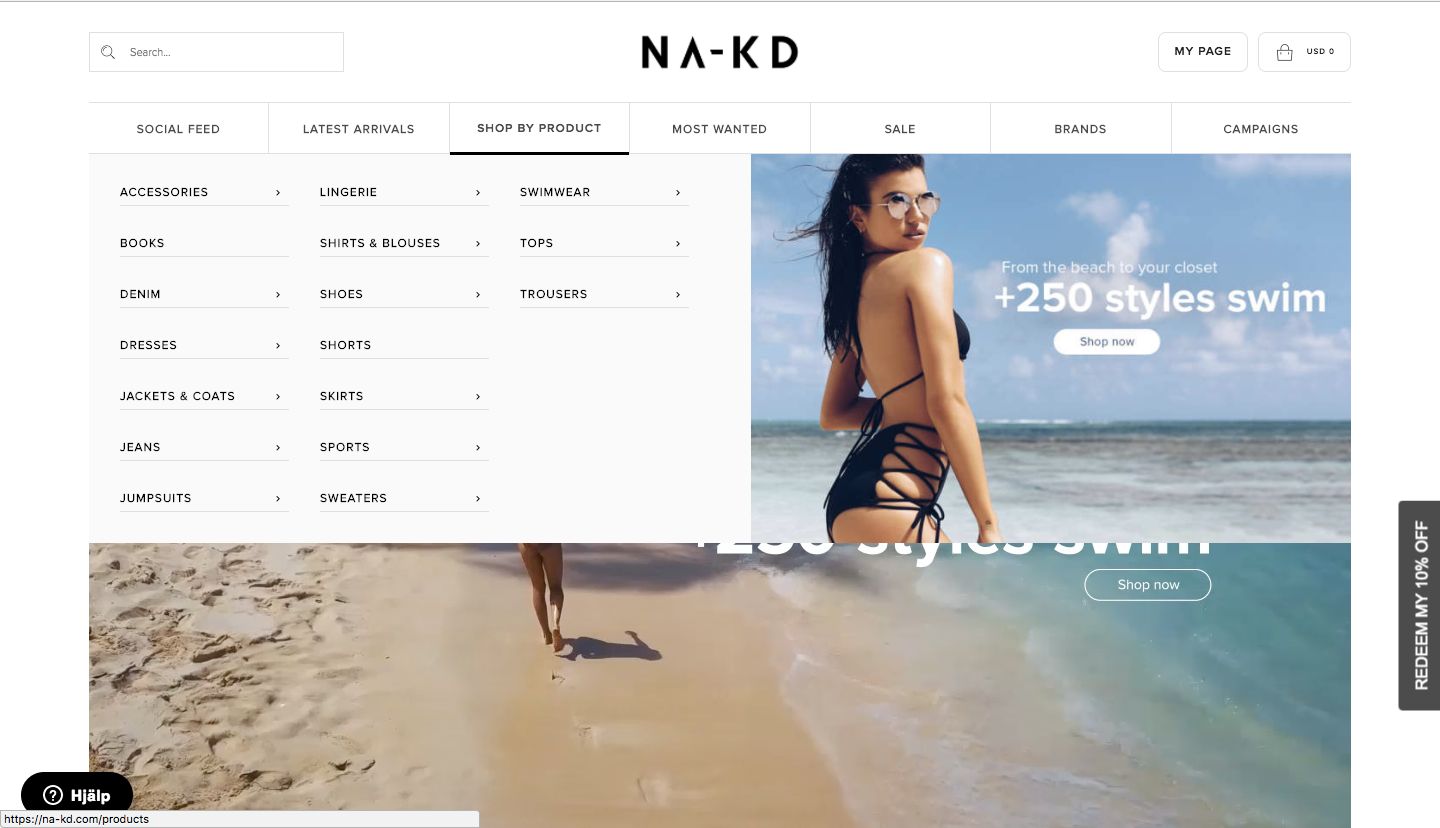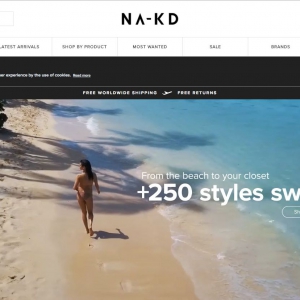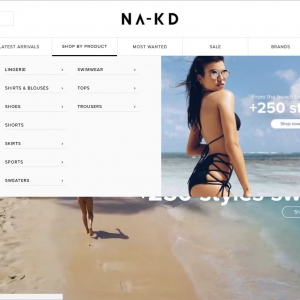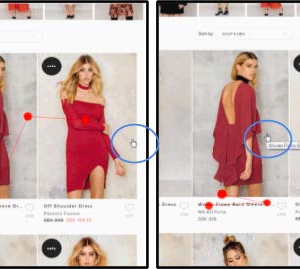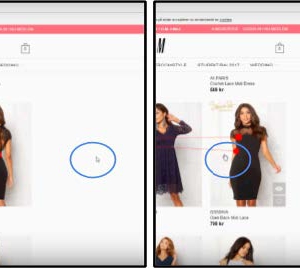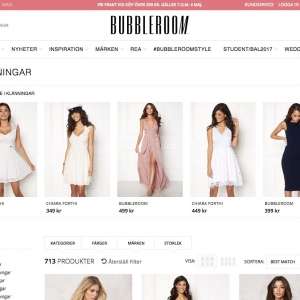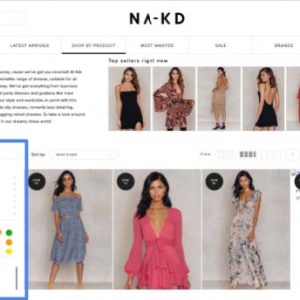Introduction
In this paper we have chosen to study three aspects of the shopping experience online – navigation, product image and product information, to examine if, and how, the shopping experience online needs to improve in the fashion retail industry. From eyetracking-observations and qualitative interviews in this study, we identified the customers expectations and perceived problems in the online shopping experience. One of our findings show that there is a general agreement that product images have a significant impact on the shopping experience online. Another finding shows that distinctively visible filtering options on the online stores are important for the consumer to find what they are looking for.
Describing the Eye Tracking Test
The task was to buy a dress at two different online stores, NA-KD and Bubbleroom. The respondents were not given a specified time frame to perform the task, this is because we wanted the least possible impact on their natural shopping behavior. A non-participating method was used, which meant that the respondents were not addressed for no reason, but were only addressed in questions to us. All respondents were allowed to start on NA-KD’s web shop and when they had chosen a product, they would put it in the shopping cart without going to the payment and thus the task was complete.
The instructions before the task were that the respondents would tell when they were ready on the first web shop, and then be sent on to the next web shop by us. When the respondents had performed the task on the computer, they were then allowed to participate in an interview about
the experience.
The documentation of eye movements was done by recording the data from the eyetracking equipment on video recording as well. The data appeared on the screen in the form of so-called heat maps, which consist of rings that represent the respondent’s gaze. These rings are larger in size in the surfaces to which the respondent’s gaze stuck a little longer, and smaller in size in which the respondent’s gaze lasted a shorter time. The data extracted from the eyetracking equipment were then used as a verification method against the interview answers from each respondent.
Finding Respondents
Of the 14 respondents who participated in the survey, 7 of them were booked and recruited in advance via posts on social media.
The other 7 respondents were not booked but were asked to participate on site at the Trade Lab at the University of Borås. This resulted in most of the respondents being young students at the University of Borås. The requirement that participants consume fashion online at least once a year was made because it was not desirable for consumers who were completely unfamiliar with shopping online.
Conclusion
The purpose of the thesis was to investigate how web shopping in the fashion industry can improve consumers’ shopping experience based on navigation, product images and product information. In general, consumers in the survey experienced the shopping experience as positive in both web shops. Something that is remarkable, however, is that in our study it turns out that product descriptions are not important for the consumer’s shopping experience, as they did not even read it. This means that
regarding perceived irritation, product descriptions do not fulfill the role on which the thesis’ theoretical model is based. As mentioned in the discussion, however, this may depend on the choice of method.
The improvement proposals presented in the thesis are based on themes that emerge in the analysis of the survey. These improvement suggestions are presented under the third question regarding what improvements in a shopping experience fashion companies can implement. We think that the improvement proposals will lead to easier navigation and a better perception of the products for the consumer. Thus, this should lead to less irritation during online shopping and should in turn lead to an improved shopping experience.
